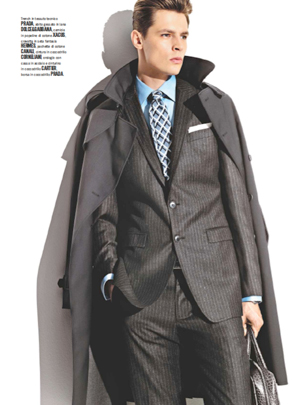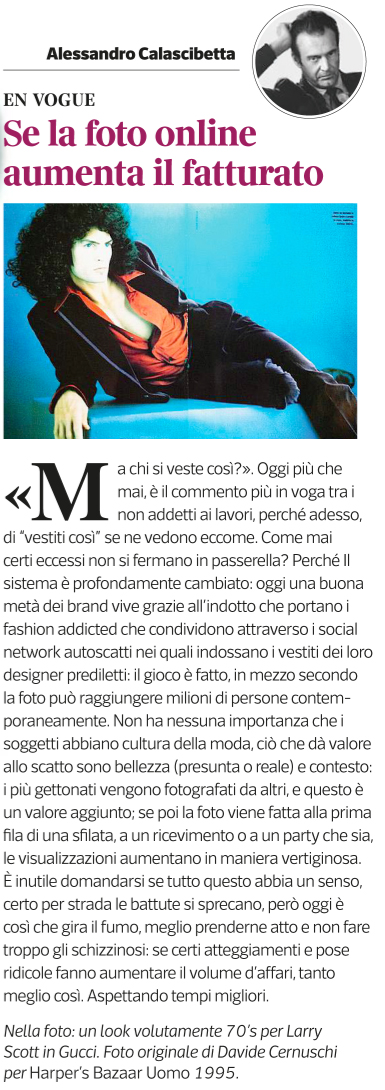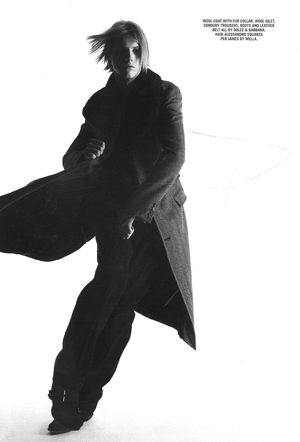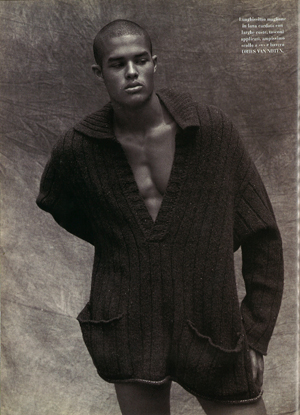HARPER’S BAZAAR UOMO LUGLIO 1995
Prima sfilata di Tom Ford per Gucci, presentata a Firenze. Il designer si impose con una collezione controcorrente. In tempo di minimalismo e total black propose colori violenti, anche negli accessori, riprendendo materiali come il mohair, più vicini all’abbigliamento femminile. Nella foto il top model svedese Marcus Schenkenberg sulla cover di Harper’s Bazaar Uomo del luglio 1995, fotografato da Judson Baker.
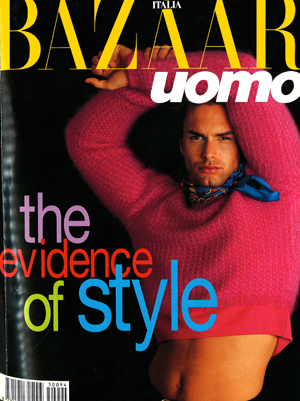
First fashion show of the collection of Gucci designed by Tom Ford, presented in Florence. The designer came out with an upstream collection. In time of minimalism and total black, he suggested violent colors, even for the accessories, recovering materials such as mohair, closer to womenswear. In the photo the Swedish supermodel Marcus Schenkenberg on the cover of Harper’s Bazaar Men of July 1995, photographed by Judson Baker.





